Growing green onions for greens: from seeds, bulbs and other methods
Everyone knows and at least once in his life tried to grow green onions from an onion. But only experienced gardeners know that greens can also be grown from seeds.
Content:
Growing herbs from bulbs
You can grow onion seeds in open or closed ground. Closed or protected ground means: film shelters, greenhouses, hotbeds.
To obtain a rich harvest of greens with high taste, the following varieties are used:
- Rostov
- Arzamas
- Bessonovsky
- Spassky
- Troitsky
More bulbs are better grow in several rows... Planting vegetables in 6 rows is considered ideal. The distance between each bulb is 15 cm, between rows no more than 8 cm. The soil is prepared in advance, it must be fertile. If the soil is poor, and groundwater passes nearby, then the belt method of planting onions can be used. The size of the tapes should be somewhat narrower than the beds.
The third planting method is pavement. The bulbs are planted without offset from each other. This way more vegetables can be planted in a small area. Warm water is applied immediately after planting.
In order for the onion to be bright, juicy and lush, a large amount of sunlight must fall on it. Fertilization has a beneficial effect. The following components are diluted in a bucket of water:
- Potassium chloride
- Superphosphate
- Ammonium nitrate
You need to plant onions on the street in early spring, it is advisable to have time to do this in March, but April is also suitable. If the climate permits, then you can plant onions before winter before the onset of frost. If the site is located in central Russia, then onions need to be planted in September / October. To prevent the plants from freezing in winter, with the onset of frost, the planting is covered with earth and humus, the total layer should not exceed 10 cm for oxygen access. In the spring, the shelter is removed.
Onions love moisture, therefore, in the absence of precipitation, it must be watered manually.
To activate the process of growing greens, the bulb can be soaked in water for a day before planting. The dry neck of the onion is also trimmed. The bulb is not completely buried in the soil. The neck of the bulb should be level with the soil.
Growing green onions from seeds
The main condition for a good harvest is well-prepared soil... Groundwater should not pass near the site, there should be no stagnant water. Rotted fertilizers are applied to the soil. All preparatory work is carried out in the fall, and the sowing of fertilizers in the spring. In the spring, the site is carefully dug up.
The last date for planting onion seeds is the first week of May.
It is advisable to finish all work in the second half of April. Seeds are laid out in 5 rows, placed in the soil to a depth of 1.5 cm. In order for the seeds to give high germination, they must first be soaked.
When the first greens break through, top dressing is done:
- First, use urea, mullein or chicken droppings diluted in water.
- 10 liters of fertilizer are applied to one square meter of greenery. After that, the area is watered with plain water.
- Re-feeding is done in 2-3 weeks.
The soil should be constantly moist and loose, but there should be no stagnant water. You don't have to water the onions every day. For the entire growing period, it is enough to make 5 full waterings.
It is forbidden to use pesticides when growing green onions.
You can harvest when the greens reach a height of 30 cm. After that, it will no longer grow, but only waste nutrients and wither. If everything was done correctly, then the harvest takes place in July.
Other methods of obtaining green onions
Green onions can be obtained from seedlings. This method makes the green onions taller and thicker. To get seedlings:
- The technique of growing onions from seeds is repeated.
- After 2 months, the seedlings are transplanted from boxes into open ground.
- The timing may fluctuate, you need to focus on the appearance of the greenery, 3 leaves should grow.
- The soil is prepared in advance, moistened and loosened.
- When planting, a distance of 25 cm is adhered to between rows, 5 cm between each plant.
- Before planting seedlings, the soil is moistened, 1 liter of water is added to 1 square meter of land.
You need to be careful when transplanting seedlings. New leaves begin to grow from a point in the center of the plant, so the stem should not be heavily sprinkled with earth. After landing the same amount of water is introduced as before planting, then you can add mulch in the form of peat or humus.
The cultivation does not end there. When the length of the leaves reaches 30 cm, the beds need to be made more rare and every second bush should be transplanted.
You can harvest when the length of the greenery reaches 4 cm.
To serve greens on the table in early spring, forcing and sampling is done. The most fertile areas are selected for forcing. Additionally introduced organic fertilizers... Nitrogen fertilizers, potassium salt, nitrophoska, superphosphate will not be superfluous. Large plants are selected for forcing, the mass of each bulb should be in the region of 30 grams. The onions are not pressed into the soil, this can stop the growth of fragile roots. After planting, the onions are sprinkled with earth, as well as humus or peat.
To make the bulb better overwinter, you can make a shelter. With your own hands, you can build a frame covered with plastic wrap. In spring, onions do not need shelter, and in May they can harvest. There is no beggar easier than growing green onions. To get a rich harvest, the main thing is to choose a fertile light soil, nature will take care of the rest.
More information on planting onion seeds can be found in the video.



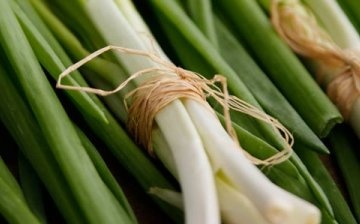
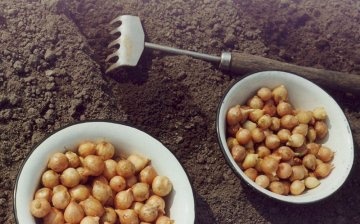
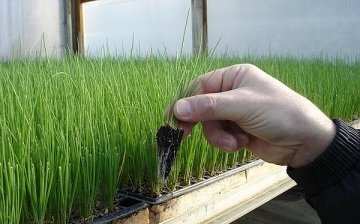
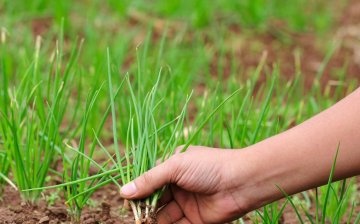




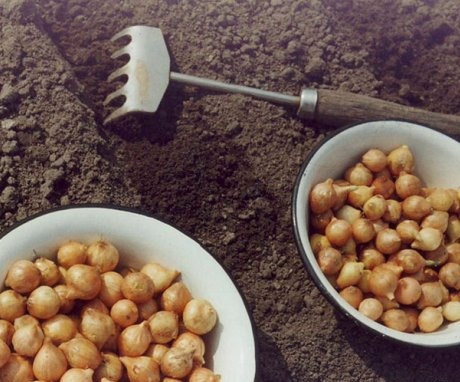
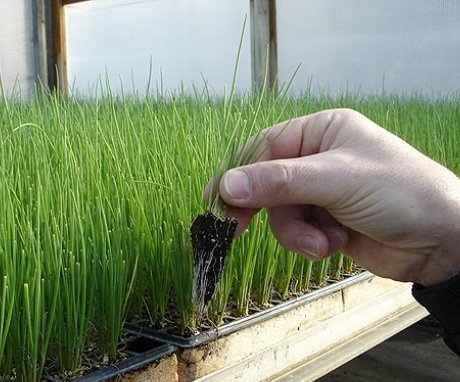
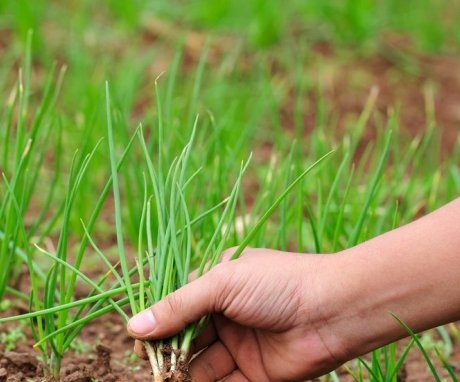
I have always grown onions on my site only from bulbs, but I have never tried them from seeds. This is a more time consuming method, although it is interesting to know about it. Now just a young onion grows very well.
We have never tried growing green onions from seeds in winter. Usually, forcing is done from bulbs, however, in this case, the resulting green onions are much smaller than the onions from which they grew. This year we will try to grow onions from seeds, maybe it will work out?